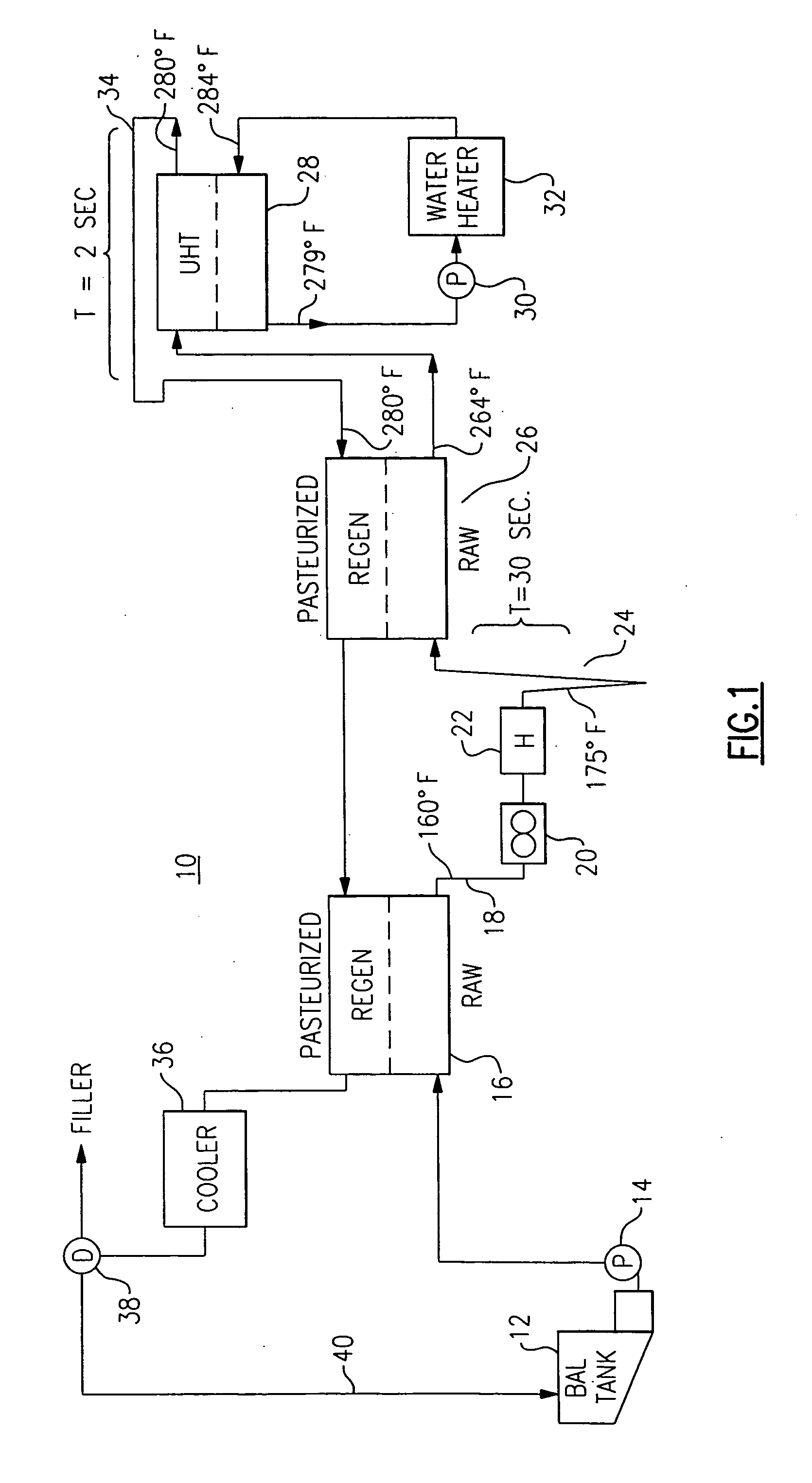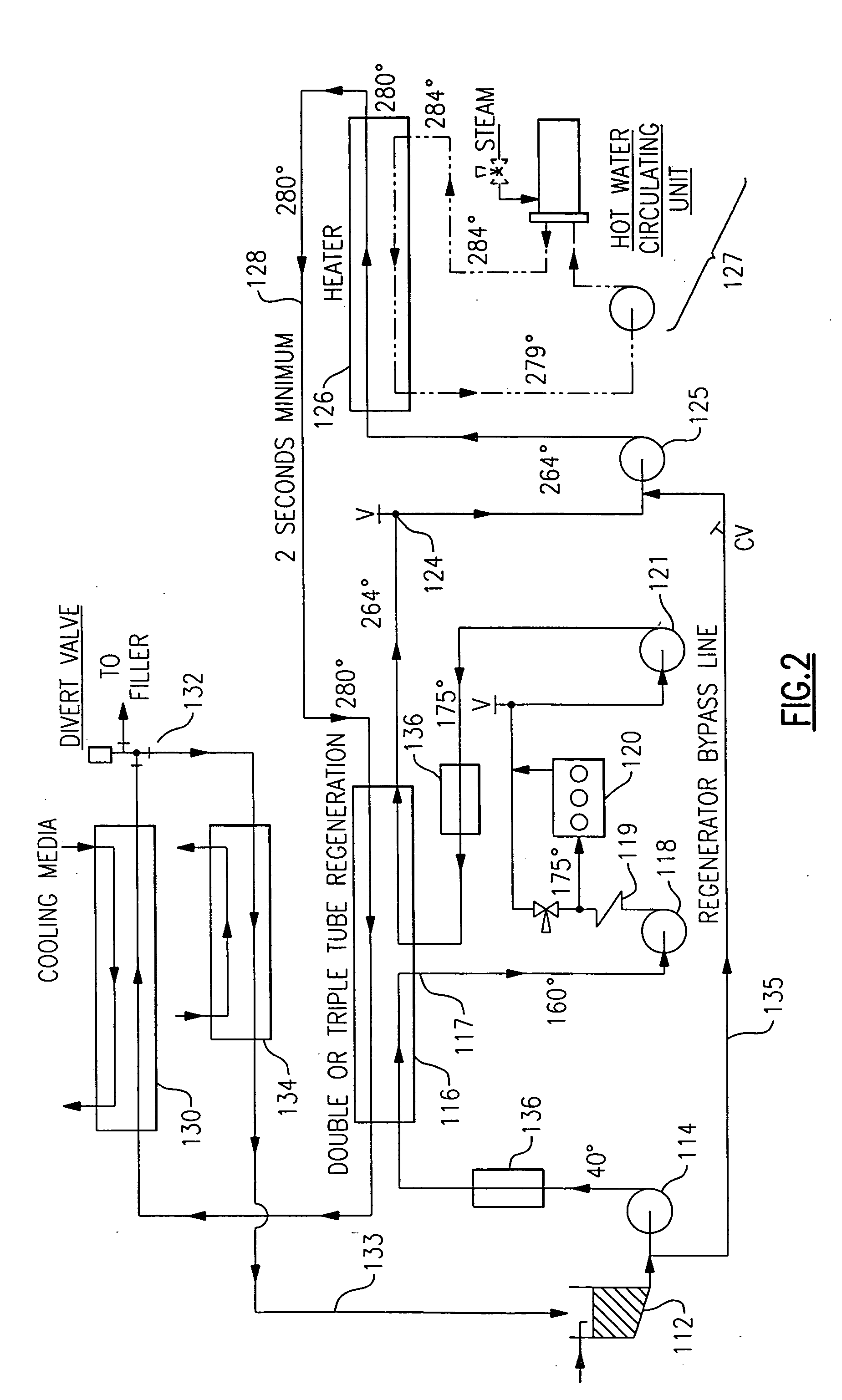UHT pasteurizer with regeneration
a technology of pasteurizer and regeneration, which is applied in the field of pasteurizing dairy products, can solve the problems of “cooked” or scalded flavor of the product, and achieve the effect of rapid and efficient regeneration and maximum regeneration efficiency
- Summary
- Abstract
- Description
- Claims
- Application Information
AI Technical Summary
Benefits of technology
Problems solved by technology
Method used
Image
Examples
Embodiment Construction
[0026] To pasteurize milk legally, the milk must be heated to a minimum 163° F. (72.8° C.) and held at that temperature for at least 15 seconds. Milk product with a fat content of 10% or more must be heated to at least 168° F. and held for at least 20 seconds. There are alternative time-temperature relations, where the product can be heated to a higher temperature for a shorter period. One example of this is ultra high temperature pasteurization, or UHT, defined as heating the milk product to 280° F. and holding at that temperature for a minimum of two (2) seconds. At the present time, the majority of the milk in the U.S. that is pasteurized and bottled is heated between 163° F. and 175° F. and then cooled below 40° F. The equipment used to attain such pasteurization uses either a tubular heat exchanger or a plate type heat exchanger or press. These heat exchangers generally consist of three sections: a heater, a regenerator, and a cooler. The heating medium is usually water a few d...
PUM
 Login to View More
Login to View More Abstract
Description
Claims
Application Information
 Login to View More
Login to View More - R&D
- Intellectual Property
- Life Sciences
- Materials
- Tech Scout
- Unparalleled Data Quality
- Higher Quality Content
- 60% Fewer Hallucinations
Browse by: Latest US Patents, China's latest patents, Technical Efficacy Thesaurus, Application Domain, Technology Topic, Popular Technical Reports.
© 2025 PatSnap. All rights reserved.Legal|Privacy policy|Modern Slavery Act Transparency Statement|Sitemap|About US| Contact US: help@patsnap.com



